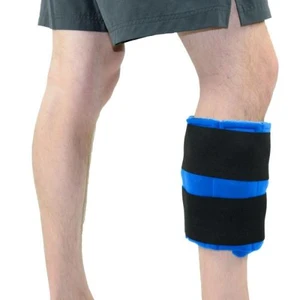
Osteoarthritis - What Is It And How To Deal With It
Share
Not a lot of people know this but our knee is known to be the largest joint in our body. As long as your knee is in good health, it will be able to move without experiencing any sort of friction, making it possible for you to walk, make sudden turns, and engage in different activities without any worries. How does a knee become flexible? Tendons, bones, muscles, cartilage, and ligaments together work to make that possible.
Our knee joint is composed of three bones, which are thighbone (femur), shinbone (tibia), and kneecap (patella). The thighbone is situated at top of the shinbone that has a flat surface. It is on this surface that the thighbone’s rounded end rolls when you straighten or bend your knee. Kneecap, on the other hand, does the job of providing leverage and is connected to the muscles. Kneecap also does the job of bringing down strain on these muscles. A proper, fully-functioning knee joint’s bones, the ones mentioned above, are quite smooth and covered with a strong safe tissue known as cartilage.
You don’t experience knee pain all of a sudden. There are reasons behind that pain, which could be caused by injury, infection, or arthritis. For injuries, you should buy ice wraps for the knee as they have been found to be among the best treatment for reducing inflammation and easing pain.
Osteoarthritis
Osteoarthritis (OA) is a chronic joint disease that makes your joint’s cartilage collapse. This is a disease that has been identified as the most common cause of pain in people’s joints. Cartilage is there to provide a sort of cushion to the joint and secure the surfaces of the three bones. When it breaks down, our bones begin to grind against one another and it is this grinding that causes pain to us. You’ll feel its effect while walking up the stairs while sitting down, or while bending to open a drawer or doing some work in the garden.
Osteoarthritis can cause impairment to the entire knee or only one side of the knee. If you’re affected with pain on only one side of the knee, an orthopedic might diagnose your problem as unicompartmental OA.
You may get diagnosed with patellofemoral OA if the pain is solely under the knee cap. Patello-femoral OA is quite common in people above 40 years of age.
It is important to note that there is no cure for Osteoarthritis and factors that contribute toward it include joint injuries, aging, genetics, and obesity. However, if you’re diagnosed early and treatment starts at the earliest, you will be able to keep your joints from experiencing further damages.
